partner
Latest

The best smart locks
By Jon Chase This post was done in partnership with Wirecutter. When readers choose to buy Wirecutter's independently chosen editorial picks, Wirecutter and Engadget may earn affiliate commission. Read the full guide to smart locks. Your front door lock is an unsung hero, quietly keeping thieves and rogues at bay. Smart locks are the superheroes of the species, with special powers that make life more convenient (and a little more fun). The Yale Assure Lock SL (YRD256) Connected by August is our top pick as it comes closest to hitting the sweet spot of convenience, security, reliability, and good looks. It's fast, quiet, and completely keyless, and unlike with other models, its sleek, slim, glass-and-metal housing is stylish. The Yale Assure Lock SL (YRD256) combines the hardware-security chops of Yale with the smart-home finesse of August. It connects to your Wi-Fi network (via the Connect bridge), allowing you to control the lock and manage access codes remotely. This ability to manage or even create new codes on the fly makes the lock especially suited to owners of vacation homes and short-term rental properties. The included August module makes the lock widely compatible with Alexa, Google Assistant, Siri, HomeKit, and other smart gear. Unlocking it is simple, and its mechanism is far quieter than that of nearly every other lock we've tested. We also like the DoorSense accessory, which tells the lock if the door is open so that the deadbolt doesn't engage before it's shut. Although we greatly prefer the feel of the keypads found on Schlage locks, the Yale Assure Lock SL's other features, reliability, and overall aesthetics make it a far better buy for most people. If your door is a single-hole model—that is, with a doorknob or lever and no deadbolt—the Yale Assure Lever (YRL256) is the one to get. It offers features identical to those of the deadbolt version, with a couple of minor differences; for instance, you can wake the lock or have it lock when you're leaving simply by pressing the Yale logo. We tested it on an internal door for several months, and we love how quiet it is. One extremely important note: The Yale Assure Lock SL has no keyway—should its electronics ever fail or its mechanism jam, you would be locked out of your home and would have to destroy the lock to get in. (Yale also sells a version with a built-in keyway, which we do not recommend—see How we tested for more details.) As such, we recommend this lock only if you have ready access to another entrance, such as a back door or a garage. If you prefer to have traditional key access to fall back on, we strongly recommend going with another pick. The Ultraloq U-Bolt Pro matches or exceeds the Yale Assure Lock SL in some ways, and it missed the top spot due to only a few minor performance flaws as well as its narrower compatibility with other smart-home devices and the fact that the company is a relative startup. Still, by any standard it is a wonderful device, with the cleanest, most precise hardware we've ever tested and a pleasing low-profile design. You can unlock it six different ways, including with a numerical code, in an app, through a physical keyway, and—the pièce de résistance—via fingerprint. (We highly recommend buying the $50 add-on Ultraloq Bridge, which allows for remote programming and control.) The companion app you use to set up and control the U-Bolt Pro is less polished and reliable than the August app, and we found that it sometimes required a restart to get back in sync. Although we believe the feel and function of the U-Bolt Pro's rubber number buttons to be superior to pecking numbers on the glass screen of the Yale Assure Lock SL, the fingerprint unlock was our preferred way to unlock this model. Unfortunately, it balked on around 20 percent of our attempts to unlock it using this method, and that required us to make multiple finger presses or to resort to using a key code. We hope this is something that the company can improve, since the fingerprint feature provides the best balance of security and convenience. The U-Bolt Pro is compatible with Amazon Alexa and Google Assistant, but unlike the Assure Lock SL it doesn't work with Apple HomeKit or Samsung SmartThings—if that doesn't matter to you, the U-Bolt Pro may be the better pick. The Schlage Encode Smart WiFi Deadbolt is a trimmed and toned update to similar previous picks, the Schlage Connect and Schlage Sense, but with the clever ability to connect directly to your Wi-Fi without the need of a plug-in adapter. (Most smart locks, in contrast, use battery-friendly Bluetooth and then connect wirelessly to a plug-in adapter that allows them to connect to your Wi-Fi and accept remote control.) That capability is appealing, and along with the nicely designed hardware—which also includes a built-in impact alarm—it makes the Encode one of the easiest models to install and one of the simplest smart locks to use of those we've tested. In gaining its smaller internal housing, the Encode unfortunately shed compatibility with Apple HomeKit, though it can still integrate with Amazon Alexa or Google Assistant. We tend to prefer the feel of capacitive keypads like the Encode's over that of a glass touchscreen, and we think that feature makes this lock less fussy to use, so it's an especially good choice for rental properties. If you are a renter who isn't allowed to change locks (or a homeowner who doesn't want to), the third-generation August Smart Lock is a wallet-friendly addition to an existing deadbolt. Unlike our other picks, which require replacing all the elements of your door lock, this August model lets you keep your deadbolt and keyway and swap only the thumb-turn mechanism on the inside of the door. When you have the Smart Lock on its own, you can set it to unlock when you approach the door and to relock after you close the door (thanks to the included DoorSense magnetic sensor), but you can also control it with August's smartphone app or the August Apple Watch app via Bluetooth. An optional adapter (the $70 August Connect) is required if you'd like to control the lock when you're not home, and it enables voice control through Alexa and Google Assistant (unlike other models, this August lock is not HomeKit or Siri compatible). The August is surprisingly noisy in operation, and in our testing of the automatic unlock feature, we experienced occasional delays or outright failures to trigger, sometimes requiring use of the app to unlock the door. We think this issue is highly dependent on the specifics of the install environment and therefore can be lessened with troubleshooting and recalibration.

How to connect your new turntable to any audio system
By Brent Butterworth This post was done in partnership with Wirecutter. When readers choose to buy Wirecutter's independently chosen editorial picks, Wirecutter and Engadget may earn affiliate commission. Read the full blog how to connect your new turntable to any audio system. Your new turntable was conceived in an era when vinyl records were the royalty of the audio world, but born in an age dominated by digital systems that can summon millions of tunes at the touch of a button. Getting these digital systems to work with 1950s technology can be complicated. With vinyl record sales surpassing CD sales in 2019, it's no wonder the number-one audio question I hear right now from family and friends is, "How can I connect a turntable to my (receiver, Bluetooth headphones, wireless speaker—you name it)?" No matter what turntable and audio system you have, you should be able to connect them. But the process is not always as simple as it could be. Although some turntables include technologies such as Bluetooth that make it easy to connect them to today's wireless speakers and headphones, most don't, which makes the connection path a little more complex.
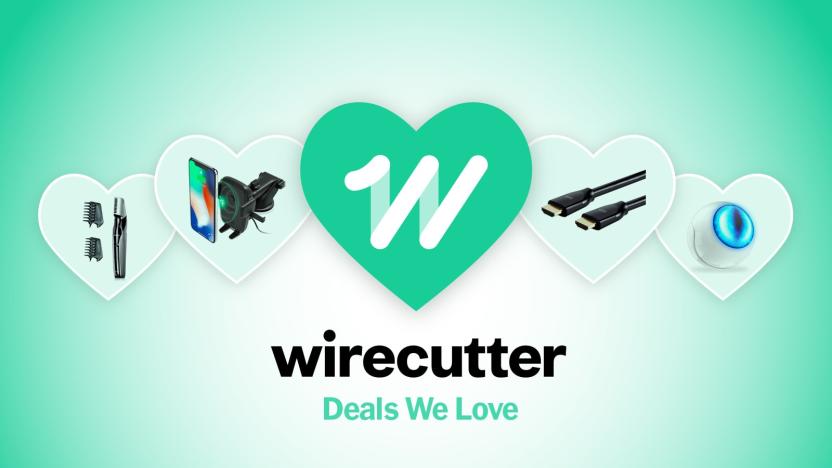
Wirecutter's best deals: The Fibaro Motion Sensor drops to $50
This post was done in partnership with Wirecutter. When readers choose to buy Wirecutter's independently chosen editorial picks, it may earn affiliate commissions that support its work. Read Wirecutter's continuously updated list of deals here.

The best portable laptop charger
By Sarah Witman This post was done in partnership with Wirecutter. When readers choose to buy Wirecutter's independently chosen editorial picks, Wirecutter and Engadget may earn affiliate commission. Read the full guide to portable laptop chargers. We spent 15 hours researching and 41 hours testing five top portable laptop chargers, and we found that the Mophie Powerstation AC is the best option if you want the ability to charge your computer and smaller devices while traveling, in an emergency, or whenever power outlets are out of reach. It can power laptops as robust as the 15-inch MacBook Pro, it's compact and lightweight, and it charges via USB-C—an increasingly ubiquitous standard. Mophie's charger is the one we'd buy ourselves. It's the smallest laptop charger we tested and one of the lightest. But it still performed well in our testing with more than 100 W of power output and enough capacity to bring a dead MacBook Air up to 81 percent charged, even during heavy use. It also has the best look and feel of any we tried—we really like how its slim, portable design and professional-looking fabric exterior is complemented by well-placed ports and a magnetic rubber flap protecting the AC output port. Plus, it's made by a company we trust, and its 24-month warranty is as good as any we found.
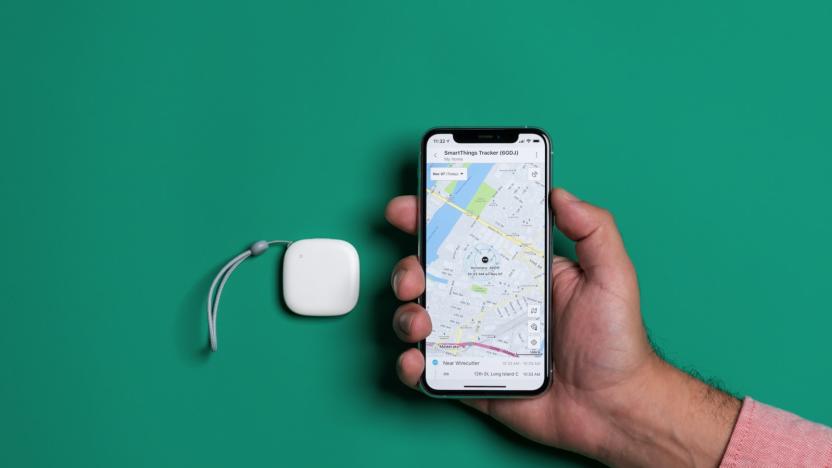
The best cellular GPS tracker
By Nick Guy This post was done in partnership with Wirecutter. When readers choose to buy Wirecutter's independently chosen editorial picks, Wirecutter and Engadget may earn affiliate commission. Read the full guide to cellular GPS trackers. While a Bluetooth tracker is useful for finding your keys or wallet at home, if you want to keep track of your kids or where you left the car, get a cellular GPS tracker. Small enough for you to stow them in a bag or pocket, these devices connect to a cell signal so you can locate them with an app—from nearly any distance. The Samsung SmartThings Tracker (AT&T) is our pick because its battery lasts for days, its tracking is accurate, and it doesn't require you to be a customer of a specific carrier. The Samsung SmartThings Tracker (AT&T) provides fast and accurate location reporting, and it supports live tracking and geofencing alerts so you can receive notifications quickly if it leaves a zone you designate. In our tests, its battery lasted four-plus days, and Samsung says it can go as long as 10 depending on usage. The crucial differentiator between the Samsung tracker and other models we considered is that it's not tied to a specific carrier: Although it relies on AT&T's cell network for service, anyone can use it without being tied to any sort of smartphone contract. Verizon's Smart Locator updates its location a little more rapidly than the Samsung SmartThings Tracker but otherwise has similar features, including geofencing and live tracking, and in our testing its battery lasted four or five days before needing to be recharged. But the downside is that in order to buy or use this tracker you need to also have a new or existing Verizon cell phone plan. Although Verizon is a great network and has a huge customer base, we can't recommend the Smart Locator for everyone since for many people it would require switching carriers. If you have a Verizon plan already, go for it.

Wirecutter's best deals: Save $95 on a Roborock S4 robot vacuum
This post was done in partnership with Wirecutter. When readers choose to buy Wirecutter's independently chosen editorial picks, it may earn affiliate commissions that support its work. Read Wirecutter's continuously updated list of deals here.

The best bag and cable organizers
By Kaitlyn Wells This post was done in partnership with Wirecutter. When readers choose to buy Wirecutter's independently chosen editorial picks, Wirecutter and Engadget may earn affiliate commission. Read the full guide to bag and cable organizers. Whether you commute to the office or the coffee shop, you probably need a way to organize the pens, tech accessories, and toiletries you take with you every day. To find the best options to carry what different people might need with them, we spent over a week researching 65 bag organizers and testing 27 of them, and we found seven organizers we liked for their style, durability, and usability. Some backpacks and purses come with all the pockets and loops you'd need, but others are black holes, swallowing charging cables and tubes of lip balm. For those people (and I count myself among them), the right bag organizer simplifies grabbing accessories while on the go, or moving gear from one bag to another. But everyone has different carrying needs, which is why we have picks to suit a variety of situations: a tech-forward cable organizer that zips closed, a customizable mesh-pouch setup, picks that prioritize toiletries (while making room for tech), and a stylish duo of cosmetic travel pouches made of premium materials—as well as some alternatives where applicable.
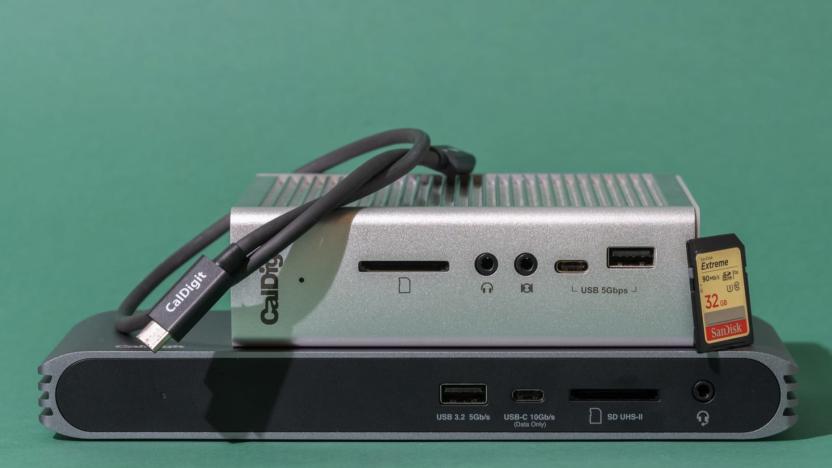
The best Thunderbolt 3 docks
By Nick Guy This post was done in partnership with Wirecutter. When readers choose to buy Wirecutter's independently chosen editorial picks, Wirecutter and Engadget may earn affiliate commission. Read the full guide to thunderbolt 3 docks. After putting in more than 25 hours of research and hands-on testing 13 Thunderbolt 3 docks with more than $7,000 worth of high-end gear, we think CalDigit's TS3 Plus remains the best choice for Mac or PC owners who need to connect multiple displays, USB-A input devices, and high-speed storage. It has more useful ports than most docks, it can charge most laptops at full speed, and it takes up little room on a desk. The CalDigit TS3 Plus has the most useful array of connections we found, starting with two Thunderbolt 3 ports, five USB-A ports, and two USB-C ports (one USB 3.2 Gen 1, one USB 3.2 Gen 2). It also has an SD card slot, a DisplayPort connector (which works with HDMI via an inexpensive adapter), Gigabit Ethernet, audio-in and -out jacks, and an S/PDIF jack for digital optical audio—the last one a rarity in these devices. And while most docks have a horizontal orientation, you can also position the TS3 Plus vertically to minimize its footprint. All current Apple laptops and desktops have Thunderbolt 3 ports, as do a lot of newer PCs, such as our top ultrabook picks; check your computer's manual. If a cheaper USB-C hub or dock can't meet your needs and you need the extra bandwidth of Thunderbolt 3, this CalDigit model has the best combination of ports, size, and shape we've yet found. CalDigit's USB-C Pro Dock is less expensive than the TS3 Plus but has most of the same features. It's also designed to be compatible with computers that have USB-C but not Thunderbolt 3, making it a good fit if you need a dock that can work with lots of different kinds of computers. This dock has three fewer USB ports (three are USB-A, and one is USB-C), an SD card slot, two DisplayPort outputs, Ethernet, and audio, and it supports the same 85-watt power output. But it doesn't have a spare Thunderbolt 3 port, so you can't daisy-chain Thunderbolt devices. The USB-C Pro Dock is also larger than the TS3 Plus, but for the price, we think this model's sacrifices are forgivable. In addition to a middle-of-the-road three USB-A ports, the HP Thunderbolt Dock 120W G2 offers a second USB-C port, making this dock more useful if you have more modern accessories and don't need access to as many older devices at once. It also includes two DisplayPort connectors, so you can attach two displays at the same time without taking up your Thunderbolt 3 port. We like its small cube shape and its low price.
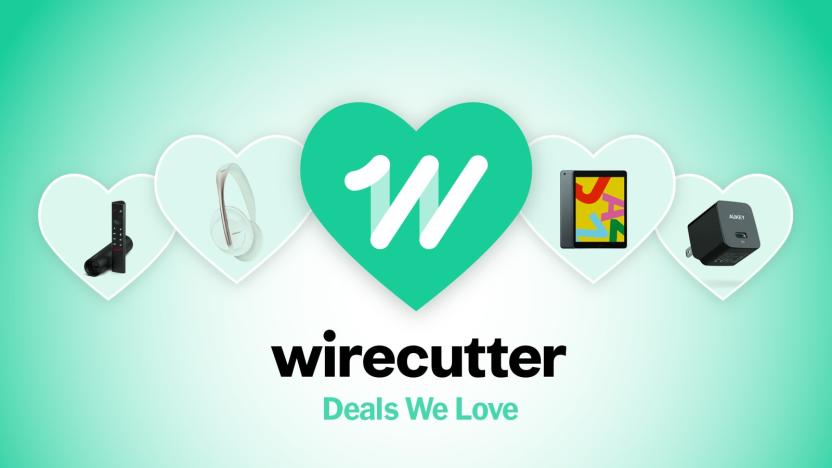
Wirecutter's best deals: Save $50 on a 7th-gen Apple iPad
This post was done in partnership with Wirecutter. When readers choose to buy Wirecutter's independently chosen editorial picks, it may earn affiliate commissions that support its work. Read Wirecutter's continuously updated list of deals here.

The best USB-C laptop and tablet chargers
By Nick Guy This post was done in partnership with Wirecutter. When readers choose to buy Wirecutter's independently chosen editorial picks, Wirecutter and Engadget may earn affiliate commission. Read the full guide to USB-C laptop and tablet chargers. While it used to be difficult and expensive to buy a new laptop charger, computers with USB-C charging have made replacements easier and more affordable than ever. The best charger for almost any modern tablet or laptop is Nekteck's 60W Type-C Wall Charger. This adapter is just as powerful and reliable as a replacement from your laptop's manufacturer. It even comes with a USB-C charging cable, making it a better value. Whether you need to replace your original charger or just want to have an extra at home or the office, you should get the Nekteck 60W Type-C Wall Charger. It will charge almost any USB-C laptop at full speed, power 2018 iPad Pros faster than the brick that comes in the box, and even fast charge most modern smartphones. The Nekteck is also smaller than any other 60-watt charger we've found and comes with a detachable cable, which is something that'll usually costs $10 to $20 on its own. Despite all these benefits, it costs about a third the price of the equivalent charger and cable from Apple.
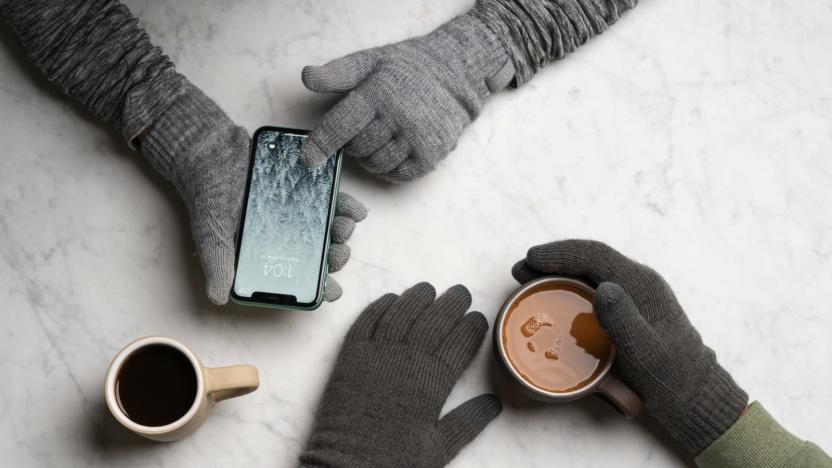
The best touchscreen winter gloves
By Nick Guy, Kaitlyn Wells, and Justin Krajeski This post was done in partnership with Wirecutter. When readers choose to buy Wirecutter's independently chosen editorial picks, Wirecutter and Engadget may earn affiliate commission. Read the full guide to touchscreen winter gloves. The best touchscreen gloves are ones that can differentiate between "texting" and "textjngZ." And after testing 20 more pairs this year, we think the newly redesigned Moshi Digits Touchscreen Gloves are some of the best we've seen of the 80 we've tried overall. They're warm enough, accurate, and can fit a wide range of hand sizes. Although no pair of touchscreen gloves is going to keep your hands perfectly warm or let you type as well as you would with bare fingers, the Moshi Digits were warmer, fit better, and were more accurate in typing tests than the competition. If you want a good pair of touchscreen liner gloves instead, we have a pick for that. If you want a thinner glove for fall weather or prefer the classic look of leather, we also have picks for those. Do keep in mind, though, that ultimately it may be easier to use voice commands and audio messages, rather than trying to type in even the best of these gloves.
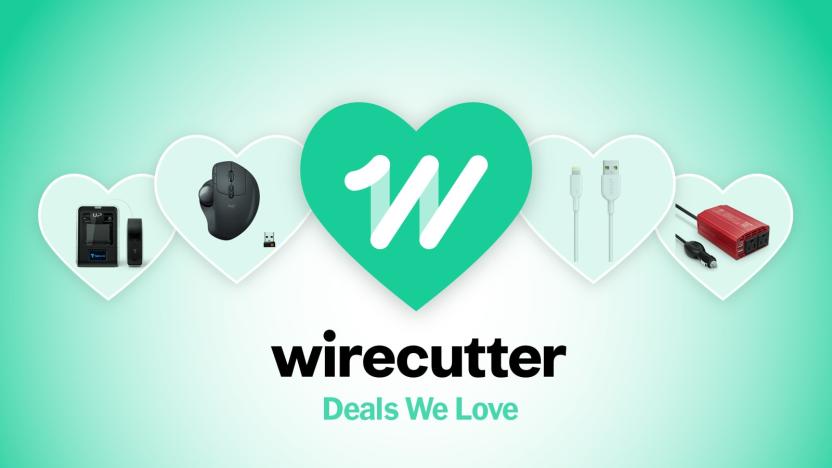
Wirecutter's best deals: Save $150 on a Tiertime Up Mini 2 3D printer
This post was done in partnership with Wirecutter. When readers choose to buy Wirecutter's independently chosen editorial picks, it may earn affiliate commissions that support its work. Read Wirecutter's continuously updated list of deals here.
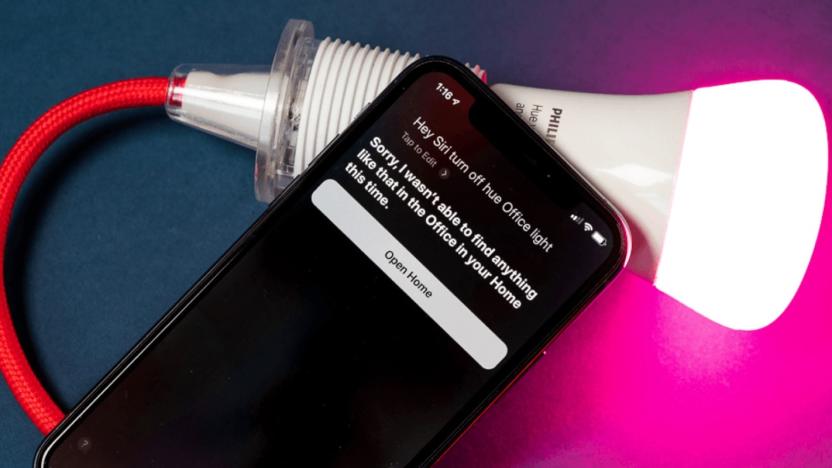
Why your new smart home devices won't work, and how to fix them
By Rachel Cericola This post was done in partnership with Wirecutter. When readers choose to buy Wirecutter's independently chosen editorial picks, Wirecutter and Engadget may earn affiliate commission. Read the full blog why your brand-new smart home devices won't work, and how to fix them. Christmas morning should have been a time of giving and togetherness, not shattered dreams and nervous breakdowns. But sometimes joy turns to anger when your friend or loved one gets stuck trying to set up a smart-home device they received as a gift. Because these devices may require complicated setups, including smartphone apps, Wi-Fi passwords, and integration with a smart speaker, there are a lot of ways things could go wrong. Before you call someone a name you can't take back, take a breath and read our answers to the most common smart-home questions we receive.
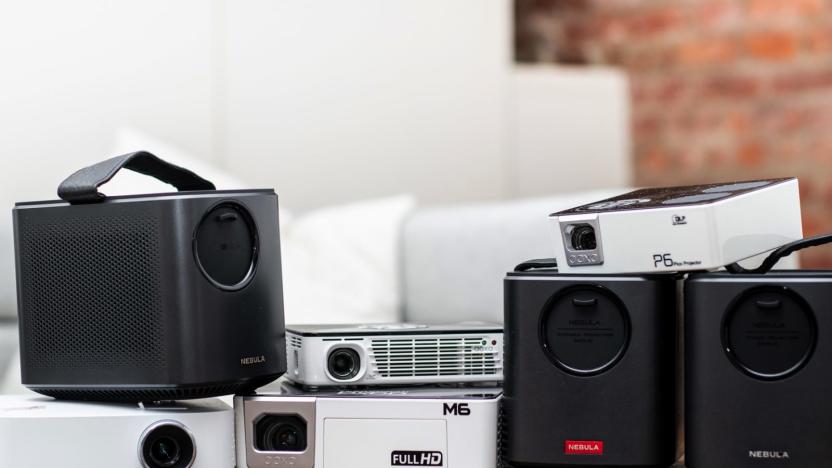
The best portable mini projector
By Daniel Varghese and Adrienne Maxwell This post was done in partnership with Wirecutter. When readers choose to buy Wirecutter's independently chosen editorial picks, Wirecutter and Engadget may earn affiliate commission. Read the full guide to portable mini projectors. A mini projector combines the portable convenience of a phone or tablet with the big-screen appeal of a TV. Although none of the 16 models we tested rivals the performance of a good TV or full-size projector, we like the Anker Nebula Mars II Pro the best because of its ease of use, great Android OS, solid battery life, and decent image quality. The Anker Nebula Mars II Pro delivers the best combination of features, performance, and ease of use of any mini projector we tested. It offers plenty of connection options, and it features an Android operating system to stream services such as Netflix, Amazon Prime Video, and Hulu. Its automatic focus and keystoning, its well-laid-out remote, and its intuitive mobile remote app make the Mars II Pro the easiest projector to set up and use, and its three-hour-plus battery life will get you through a long movie. None of the mini projectors we tested delivered a picture as bright, engaging, or accurate as the image from a good-performing traditional projector, but the Mars II Pro offers solid performance that's perfectly acceptable for casual viewing. The Mars II Pro is a bit larger than other mini projectors we tested (measuring 5.43 by 4.8 by 7 inches and weighing 3.94 pounds), but it's still smaller than a traditional projector and has a convenient carrying strap.
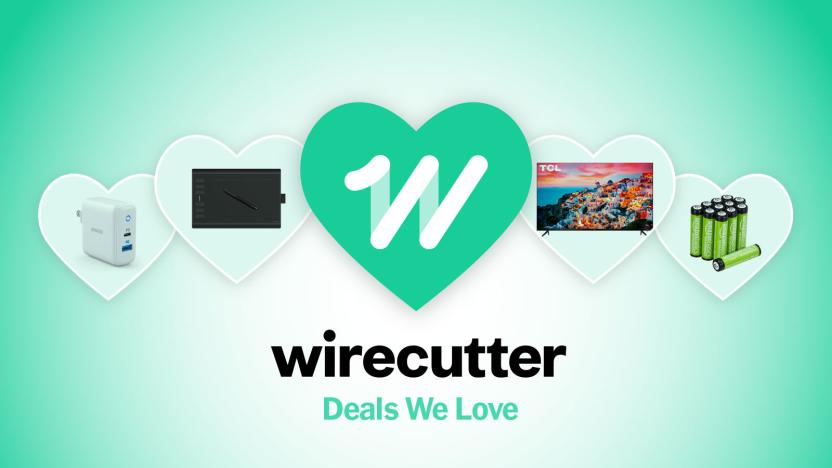
Wirecutter's best deals: Save $99 on a 55-inch TCL 5 Series 4K TV
This post was done in partnership with Wirecutter. When readers choose to buy Wirecutter's independently chosen editorial picks, it may earn affiliate commissions that support its work. Read Wirecutter's continuously updated list of deals here.
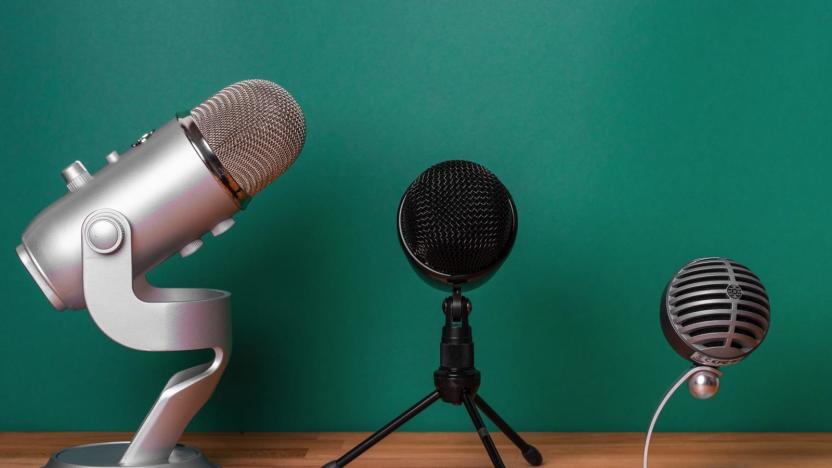
The best USB microphone
By Melanie Pinola and Kevin Purdy This post was done in partnership with Wirecutter. When readers choose to buy Wirecutter's independently chosen editorial picks, Wirecutter and Engadget may earn affiliate commission. Read the full guide to USB microphones. The built-in microphones on most computers don't do your voice justice—they're likely to pick up too much room tone, add too much fuzz, and miss out on the warm tones of being in the same room as someone. Whether you're on a conference call or recording a podcast, a standalone mic connected over USB will help you sound your best. After testing more than 25 different USB microphones over the past six years with the help of audio professionals, we've found that the Blue Yeti is still the best microphone for most people. The Yeti has been our pick since 2013 and has come out on top during every retest of available microphones. In our latest blind test with two Wirecutter staffers and three professional audio engineers, all five experts ranked Yeti recordings at or near the top of the samples they listened to because it produced clear and rich recordings and preserved our speakers' natural vocal warmth. This is a microphone that both amateurs and professionals turn to for their voice or music work and one that will last for years. If you're looking for a portable mic or one that doesn't hog your desk space, the Shure MV5 is a better option than the Yeti. When using the voice preset, all our experts ranked the audio samples in their top three, with one audio engineer even rating it best. The mic (when unscrewed from its stand) is about the size and shape of a stress ball or pool table eight ball; you'll hardly notice it on your desk more than you would a big paperweight. It can also plug directly into an iPhone, iPad, or Android device. Although it doesn't have the additional sound pickup patterns that the Yeti does, the MV5 is a fine single-voice microphone. The small size makes it much easier to pack in a bag than the Yeti—but that also means you'll have to figure out how to prop it up to match your speaking height. The AmazonBasics Desktop Mini Condenser Microphone is as no-frills as you can get while delivering surprisingly good audio quality. Basically, you plug it in and start talking, because other than a mute button, there's nothing else to fiddle with. Despite its simplicity and low price, four out of five of our audio experts ranked this in their top three mics, with two of them even choosing it as best (one preferred it for female voices while another chose it for male voices). It doesn't feel as durable as the Yeti and isn't as compact as the Shure MV5, but it's a good compromise if all you want to do is sound better and clearer than how your computer's mic makes you sound.
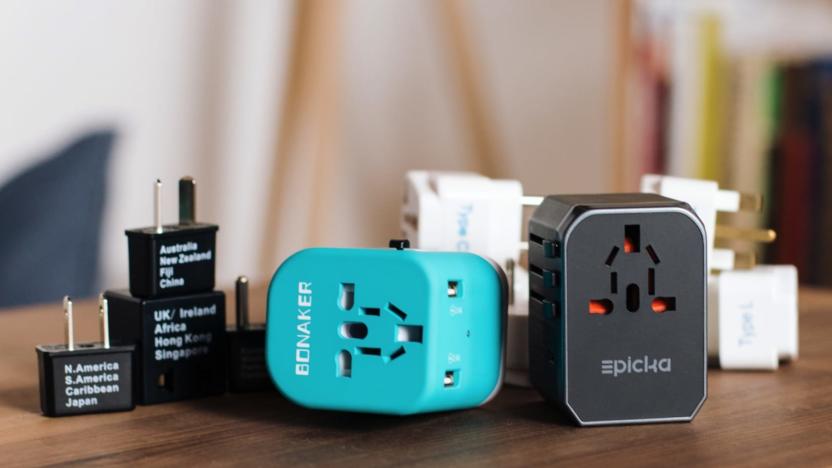
The best travel plug adapter
By Geoffrey Morrison This post was done in partnership with Wirecutter. When readers choose to buy Wirecutter's independently chosen editorial picks, Wirecutter and Engadget may earn affiliate commission. Read the full guide to travel plug adapters. After spending more than 30 hours researching and testing 12 travel plug adapters, we found the Epicka Universal Travel Adapter to be the best of the options. It fits four types of outlets, and it has more USB ports than any of its competitors, so it can can charge more devices at higher speeds. If you prefer the small size and weight of a plug adapter, we recommend the Ceptics International Worldwide 5 Piece Set. In a sea of almost-identical travel adapters, the Epicka Universal Travel Adapter stands out, combining the best of the features we were looking for. It contains the three most common international plugs and a US-style plug, which should cover you in the majority of countries around the world. It has the most USB ports—four of the standard USB-A and one USB-C—of any universal adapter we tested, and it could charge more of our devices faster. A replaceable fuse and an included spare should take the brunt of any accidental, unfortunate, or shockingly bad connections. The Epicka is fairly compact and well built, and it even comes with an extra USB cable and a nylon case. If the Epicka isn't available, the Bonaker Universal Travel Adapter is a worthy alternative. It includes the same four types of plugs and four USB-A ports—but no USB-C. It also can't charge as many devices at full speed as the Epicka can, although it's still faster than most of the others we tested. It too has a replaceable fuse and a spare, and it comes with a carrying case. However, no universal travel adapter is truly universal, and they're all a lot bulkier and more expensive than simple plug adapters. If you want the smallest adapter possible, or if you're going someplace where a universal adapter won't work (more on that in a minute), then a plug adapter could be what you need. The Ceptics tiny plug adapters are barely larger than the prongs they convert. Small, simple, and cheap, they're perfect for someone who wants to carry only the adapter they'll need and who already has a multiport USB wall charger they like. Like our universal adapter picks, this set contains the three most common international plugs and the US plug. However, it also includes a somewhat rarer plug used in some European countries that has two thick, cylindrical prongs. This means that the Ceptics will likely cover you in even more places—as long as you pack the appropriate plug adapter. These plug adapters are bigger than our top pick for plug adapters, but this means they offer a larger surface for chargers to brace against, which makes them more stable and less likely to fall off the wall. (We'll call these "Ceptics White" to minimize confusion and set them apart from our "Ceptics Black" top pick.) While you can purchase these as a five-pack, which contains basically the same assortment of plugs as the Ceptics Black set, the company also sells, in this same model line, three-packs for nearly a dozen specific regions. So if you're headed to a country not covered by the so-called universal travel adapters (for example, Brazil, India, Israel, or South Africa), or if you want to purchase multiple adapters for your gear, there's probably an option available here. A note up here, which we'll discuss in detail below: All of these are adapters only. They do not convert voltage. The majority of your electronic devices only need adapters—the voltage converter is built into the charger itself. (If the device charges via USB, just about any USB port will suffice, though different ports may provide different charging speeds.) Check out Do you need a voltage converter? if you're curious about these aspects.
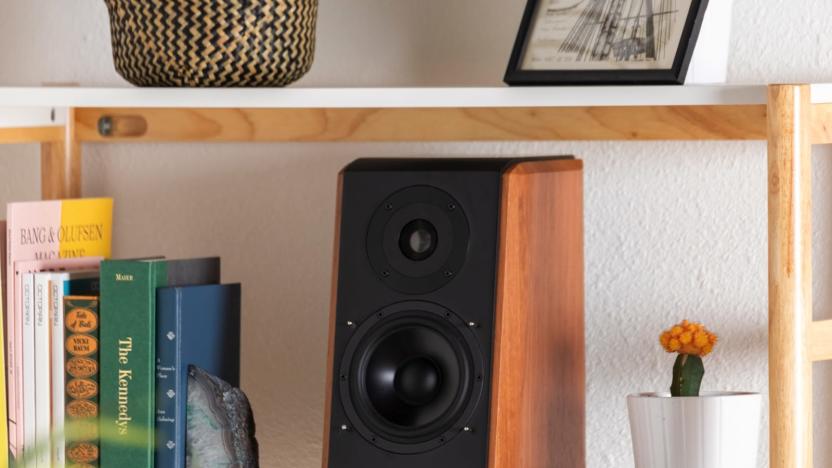
The best wireless powered bookshelf speakers
By Brent Butterworth This post was done in partnership with Wirecutter. When readers choose to buy Wirecutter's independently chosen editorial picks, Wirecutter and Engadget may earn affiliate commission. Read the full guide to wireless powered bookshelf speakers. The best wireless bookshelf speaker system we've found priced under $800 is the Edifier S1000DB. With built-in Bluetooth and both analog and digital inputs, this active speaker pair connects to smartphones, computers, and TVs, and lets you easily create a stereo system without a separate amplifier or receiver. The SB1000DB doesn't include Wi-Fi audio streaming or a phono input for a turntable, but those features are easy to add (and if you're a vinyl enthusiast, we have a turntable-ready pick for you too). Our panelists picked the Edifier S1000DB as the best sounding of all the powered, wireless bookshelf speaker systems we tested, and yet it was far from the most expensive. It's the only system we found that had respectable deep-bass response, due in part to its larger 5.5-inch woofers, and it has tone controls for fine-tuning the sound. It includes a nice remote control and both analog and digital inputs, but there's no built-in Wi-Fi or phono input. The speakers are nicely crafted, but they may be a bit large for some spaces, and their styling is straight out of the 1990s. Even though the Audioengine HD3 speakers measure only 7 inches high, they put out a surprisingly full sound that won over our panelists. They can't pump out low bass, but they don't sound thin, either—and the inclusion of an analog output gives the option to add a subwoofer. The HD3 system's small size makes it ideal for offices and bedrooms, and it offers a rich feature set, including aptX HD Bluetooth, a USB digital input, and a front headphone output. The Klipsch R-51PM is a great choice for vinyl record enthusiasts because it includes a phono input, so you can easily connect most record players without having to buy a separate preamp. The addition of USB and optical digital inputs, a subwoofer output, and a nice remote control gives the system excellent versatility, but it comes at a higher cost. The audio performance isn't quite as good as that of our top pick, but the 5.25-inch woofer in each speaker does allow the system to produce a reasonable amount of bass. We also like its styling, a modern update of Klipsch's classic horn design.

The best Bluetooth tracker
By Nick Guy This post was done in partnership with Wirecutter. When readers choose to buy Wirecutter's independently chosen editorial picks, Wirecutter and Engadget may earn affiliate commission. Read the full guide to bluetooth trackers. If you find that you're often scrambling to locate your keys or bag as you're heading out the door, a Bluetooth tracker can be a lifesaver. Tile Mate (2020) is the one you should attach to your gear. It has a range that's long enough to cover most homes or workplaces, a loud alarm, and a replaceable battery. And it costs a little less than the top-of-the-line Tile Pro (2020). Bluetooth trackers let you use a smartphone app to monitor the location of whatever they're attached to, and Tile as a company has become synonymous with trackers in the way Kleenex is with facial tissue. In our testing, the Tile Mate's 150-foot range didn't quite measure up to the 190-plus-foot range of the Tile Pro, but it's long enough that most people won't go out of range in their house or at the office. You can also remotely trigger a sound on the tracker to locate it when you're nearby (say, when you've misplaced your keys in your house), and the Tile Mate is just as loud as more expensive models. When the tracker is out of Bluetooth range, a crowd-finding feature allows others with the Tile app to help you locate your item, and Tile has the largest network of its kind. Tile Slim (2020) and Tile Sticker (2020) have shorter ranges and quieter alarms than the Tile Mate, and they don't have user-replaceable batteries. But they are designed to be used in different places, and they offer all of the benefits of the Tile ecosystem. The former is modeled on a credit card and designed for your wallet; the latter is tiny and can adhere to pretty much anything. The Tile Essentials (2020) bundle includes a Tile Mate, a Tile Slim, and two Tile Stickers at a discount, so it's a good starter combination.
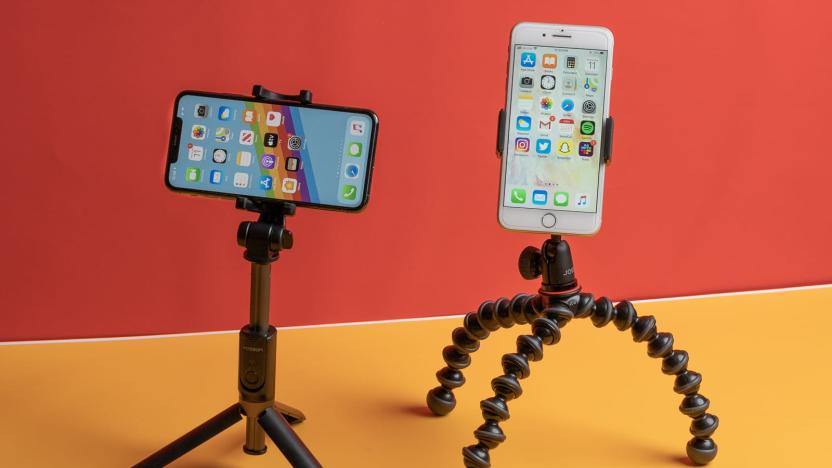
The best tripod for iPhones and other smartphones
By Erin Lodi and Signe Brewster This post was done in partnership with Wirecutter. When readers choose to buy Wirecutter's independently chosen editorial picks, Wirecutter and Engadget may earn affiliate commission. Read the full guide to tripods for iPhones and other smartphones. If you've ever compared who has the longest arms to take a group selfie or struggled to keep your smartphone stable while shooting video, a tripod and mount made specifically for phones might make your life easier. We recommend using the Joby GorillaPod 1K Kit and the Square Jellyfish Metal Spring Tripod Mount together as the best smartphone tripod and mount, after testing dozens of options along the trails of the Pacific Northwest, in the urban forests of Minnesota, and on the streets of Seattle. If you use your smartphone for low-light photography, time-lapses, selfies, or slow-motion video—or if you just like putting your phone in places that you can't easily reach by hand—this pair holds any smartphone steady at any angle, yet the GorillaPod and Square Jellyfish combo is still small enough to toss into your shoulder bag. Joby's GorillaPod 1K Kit is stronger and more flexible than anything else out there for the price. The ball-head mount moves smoothly and the long, articulated legs wrap around most anything, such as a tree branch or street signpost. At 10.24 inches from mount to foot, it's about 4 inches longer than most of the no-name, cheaper options; this gives it more reach for selfies and can help it wrap around thicker branches and posts. Additionally, its 2.2-pound weight limit is enough to support most compact cameras and even some mirrorless setups. Unlike other models we looked at, the Square Jellyfish mount can hold a large smartphone stable in portrait or landscape orientation even without a stand. As small as a set of keys, the Square Jellyfish mount easily holds an iPhone 11 Pro Max and is stable enough to stand on its own in both vertical and horizontal orientations even without a tripod. Just make sure you get the metal mount version because there are user reports of the threads, which let you attach the mount to any standard tripod screw, wearing out over time on the cheaper plastic one. We chose to pair the Square Jellyfish with the GorillaPod 1K Kit because it is a more secure mount than the one that Joby pairs with its other kits. If you need both a selfie stick and a tripod, the Yoozon Selfie Stick is an affordable two-in-one that quickly transforms from a telescoping arm extender to a tabletop tripod. It can't grip a tree branch or street sign like the GorillaPod 1K, but it does come with a stick-of-gum-sized Bluetooth trigger—pair it with your phone and press its button to grab shots from afar.